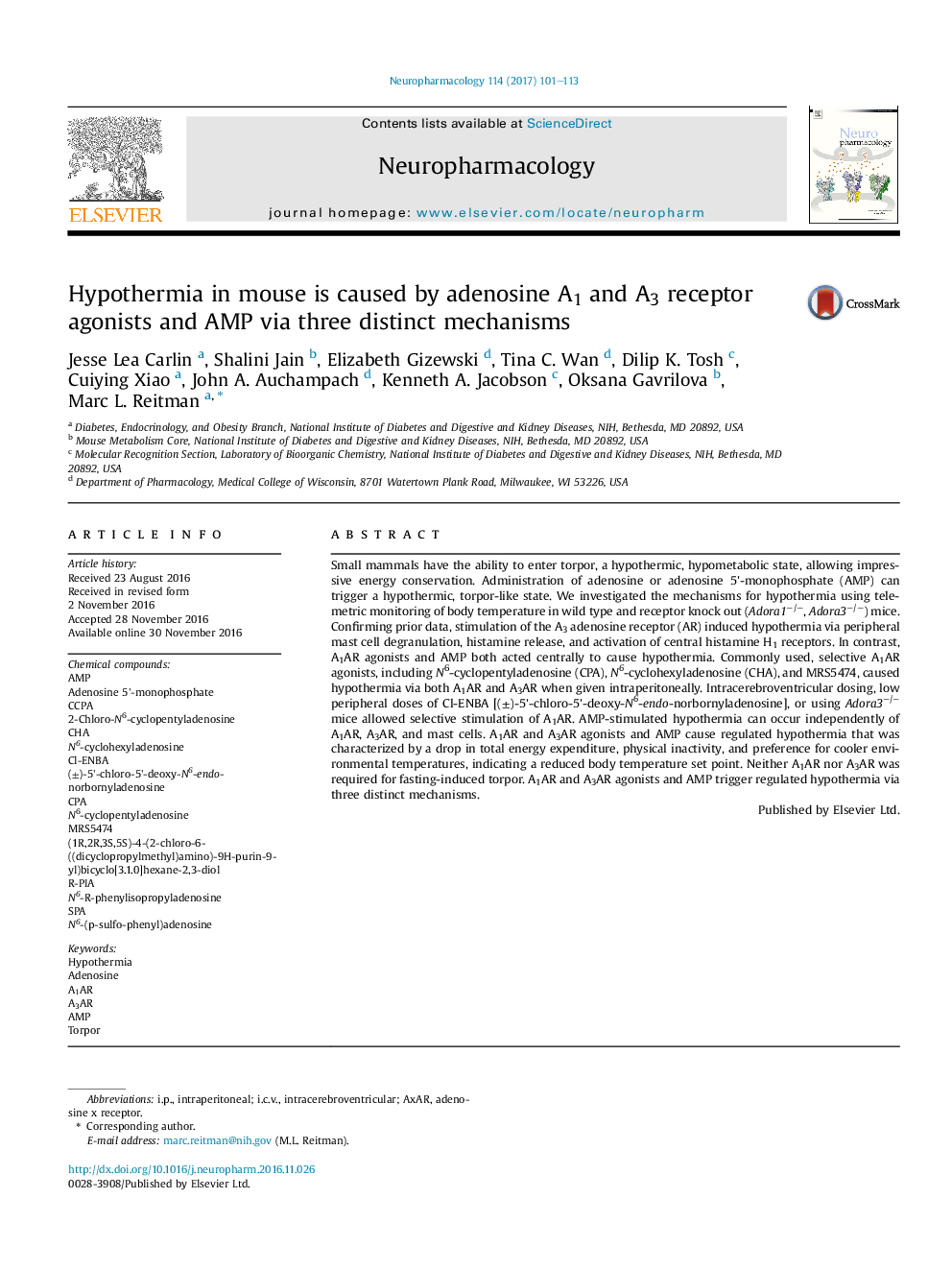| کد مقاله | کد نشریه | سال انتشار | مقاله انگلیسی | نسخه تمام متن |
|---|---|---|---|---|
| 5548977 | 1556603 | 2017 | 13 صفحه PDF | دانلود رایگان |

- Some commonly used A1AR agonists are not selective; they act at A3AR.
- A1AR, A3AR, and AMP are three distinct adenosine-related inducers of hypothermia.
- Neither A1AR nor A3AR is required for fasting-induced torpor.
- AMP can cause hypothermia via the brain, independent of A1AR and A3AR.
Small mammals have the ability to enter torpor, a hypothermic, hypometabolic state, allowing impressive energy conservation. Administration of adenosine or adenosine 5'-monophosphate (AMP) can trigger a hypothermic, torpor-like state. We investigated the mechanisms for hypothermia using telemetric monitoring of body temperature in wild type and receptor knock out (Adora1â/â, Adora3â/â) mice. Confirming prior data, stimulation of the A3 adenosine receptor (AR) induced hypothermia via peripheral mast cell degranulation, histamine release, and activation of central histamine H1 receptors. In contrast, A1AR agonists and AMP both acted centrally to cause hypothermia. Commonly used, selective A1AR agonists, including N6-cyclopentyladenosine (CPA), N6-cyclohexyladenosine (CHA), and MRS5474, caused hypothermia via both A1AR and A3AR when given intraperitoneally. Intracerebroventricular dosing, low peripheral doses of Cl-ENBA [(±)-5'-chloro-5'-deoxy-N6-endo-norbornyladenosine], or using Adora3â/â mice allowed selective stimulation of A1AR. AMP-stimulated hypothermia can occur independently of A1AR, A3AR, and mast cells. A1AR and A3AR agonists and AMP cause regulated hypothermia that was characterized by a drop in total energy expenditure, physical inactivity, and preference for cooler environmental temperatures, indicating a reduced body temperature set point. Neither A1AR nor A3AR was required for fasting-induced torpor. A1AR and A3AR agonists and AMP trigger regulated hypothermia via three distinct mechanisms.
256
Journal: Neuropharmacology - Volume 114, 1 March 2017, Pages 101-113